-
Thursday, 16 November 2023 Sabatini Building, Auditorium
Picasso. Modernity and Otherness
— With Eugenio Carmona
TicketsA young and already mature Picasso was an artist with the ability to drink in different cultures, digesting them at speed. Therefore, he had to situate himself in a position of otherness, a place in which other central figures from the first avant-garde movements were not positioned. This transcultural Picasso, at that point in time, knew of himself in foreign terms, his otherness framed in his personal, romantic and sexual relationships, in his libertarian mode of leaving bohemia behind, in the gender performativity of his iconographies, in his procedural making, in the early hybridisation of his ethnographic reference points, in his capacity to not differentiate between the mythological and the vernacular and in his art-making with traces of the museum in the proposals that sought to re-found art itself.
-
Thursday, 23 November 2023 Sabatini Building, Auditorium
Gertrude Stein and Pablo Picasso: The Invention of Language
—With Cécile Debray
TicketsThe friendship between Pablo Picasso and Gertrude Stein took shape around the core and shared elements of their respective pictorial and literary work. Stein was a Jewish North American immigrant, and homosexual, who settled in Paris before the artist’s arrival there in 1901. Picasso was a Spaniard and a suspected anarchist with a police file. Being foreigners with a partial command of French, as well as their marginalisation, underpinned their belonging to Parisian bohemia and their artistic freedom. This lecture explores the affinity between the artist and the writer, sketching the reverberations of this relationship on European art and post-war American art and examining their later influence on artists such as Jasper Johns, John Cage, Steve Reich, Roni Horn and Anne Teresa De Keersmaeker, among others.
-
Thursday, 13 December 2023 Nouvel Building, Auditorium 200
Picasso and Primitivism: Anarchist Cultural Politics in Barcelona, Madrid and Paris
—With Patricia Leighten. Presented and Moderated by Eugenio Carmona
TicketsPicasso’s work is a prime example of primitivist techniques, allusions and evocations stretching from his beginnings in modernist Barcelona around 1900 to the crystallisation of Cubism in Paris prior to the First World War. His contact with anarchism in Madrid, Barcelona and Paris bolstered experimentation as a radical intervention on the forms of the most institutionalised naturalism. This lecture explores the artist’s relationship with anarchism, not only through a political frame of reference, but also observing more specifically his employment of works, artefacts and documents from non-Western and popular art, defined historically under the category of Primitivism. Every cultural allusion, whether Iberian, African or children’s art, or even the comic strip, introduces radical techniques in his paintings, with a rejection of the values of realism, classicism and rationality and essentially in accordance with aesthetic principles. By way of these ideas, Picasso would reach the ideal of the anarchist artist.
-
Wednesday, 24 January 2024 Nouvel Building, Auditorium 200
Gertrude Stein in the Shadow Cast by Gósol
—With Robert Lubar. Presented and Moderated by Estrella de Diego
TicketsBefore his trip to Gósol in the summer of 1906, Picasso stopped working on the portrait of his patron Gertrude Stein after approximately sixty sessions. Upon his return to Paris, he resumed the portrait, replacing Gertrude’s face with a mask-like form. This experiment stems from Stein’s famous quote that Picasso “could no longer see her” and examines the role of the mask in the finished Portrait of Gertrude Stein (1906), confronting lesbian sexuality and the gender identity of the model. The lecture addresses the portrait as a performative event between artist and model and also examines the role gender plays in Stein’s own literary corpus. Lubar, moreover, underscores the instability of gender in Picasso’s art throughout 1906 and 1907 and specifically examines the fluid gender work he produced in Gósol within the framework of a crisis of masculinity culminating in Les Demoiselles d'Avignon (1907)
-
Wednesday, 31 January 2024 Nouvel Building, Auditorium 200
Figuration, Flesh, Fragmentation: Picasso’s “Attack” on the Body in 1906
—With Tamar Garb. Presented and Moderated by Patricia Mayayo
TicketsThe portrait and nude genres were places of trial and experimentation for Picasso in 1906. This year is pieced together as a turning point with Picasso’s introduction of the mythology of Primitivism in his work, the “mask” and the “face” coming together as representational and ideological filters. Exploring these two systems of thought around individuality, figuration and the body as a place of generic and sexual inscription, Tamar Garb explores how an androgynous and non-binary pictorial identity emerges, despite the artist’s famed masculine and sexist stance. Thus, the lecture seeks to read the work as an alternative to the biography and veneration of the male genius, allowing for a more expansive and open revision of Picasso’s art.
-
Wednesday, 7 February 2024 Nouvel Building, Auditorium 200
Picasso in Gósol, 1906: Gynocentric Narratives and Border Bodies
—With Jèssica Jaques Pi. Presented and Moderated by Raquel Jimeno and Raúl Martínez
TicketsThis lecture touches on the weeks that Pablo Picasso, Fernande Olivier and their fox terrier puppy spent in Gósol in the summer of 1906 from a gynocentric perspective; namely, highlighting the agency women had in the radical transformation of the artist at the time and the trace they left on his work for posterity. It focuses on the border bodies of the Gósol matriarchy, on what Fernande Olivier must have felt at an altitude of 1,500 metres and surrounded by mountains and on the unusual friendship of both with Gertrude Stein and Alice B. Toklas, strikingly present in their absence.
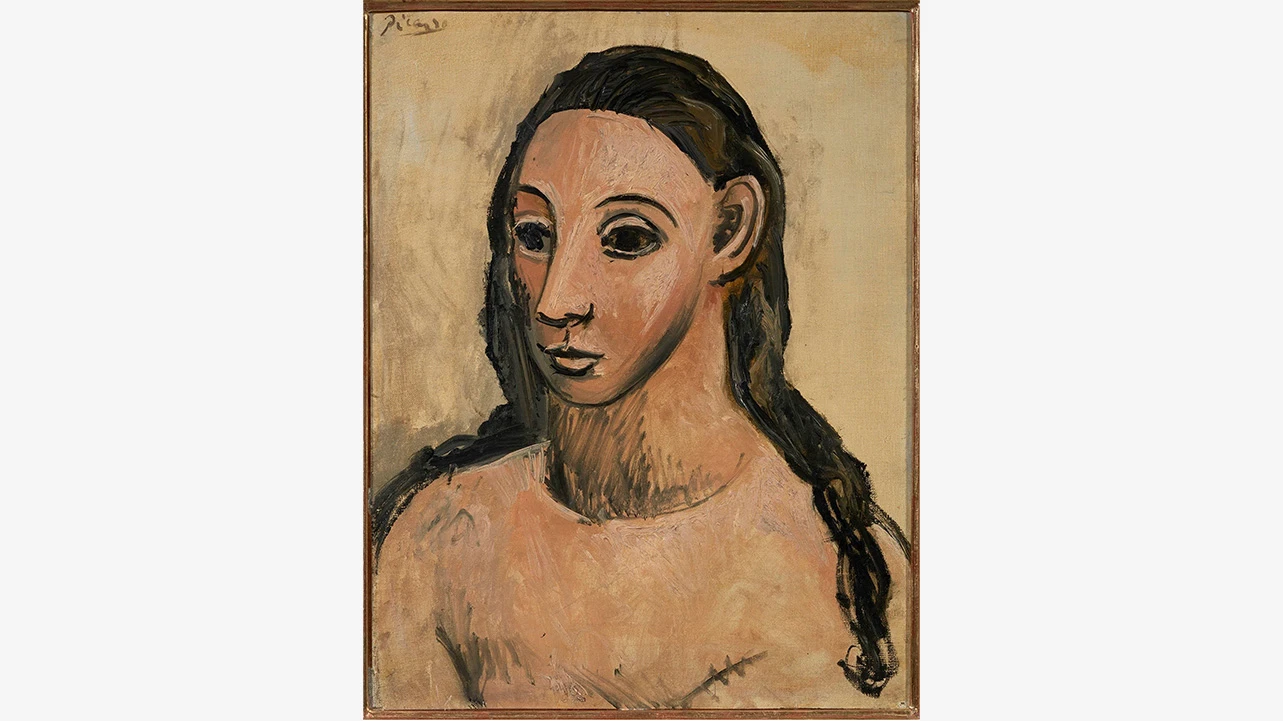
Held on 16, 23 nov, 13 dic 2023; 24, 31 ene, 07 feb 2024
The lecture series Picasso 1906. The Turning Point is articulated around the same-titled exhibition held in the Museo from 15 November 2023 to 4 March 2024. The programme brings together eminent international specialists such as Eugenio Carmona, Cécile Debray, Tamar Garb, Jèssica Jaques Pi, Patricia Leighten and Robert Lubar, among others, with a view to surveying Picasso’s origins through a contemporary gaze.
Picasso 1906. The Turning Point examines the artist’s contribution to the seminal period in modern art, setting out to understand Picasso through a contemporary field of vision considering the critical examination around the artist in the present day. The entire oeuvre of the creator of Les Demoiselles d'Avignon (1907) entails an encounter with an “other”. With Picasso everything is perpetually polyphony, heteroglossia and hybridisation, yet in the second half of the twentieth century his life and work were condensed into narratives which removed the artist from his complexity; narratives circumscribed to the artist-myth and praise of a fledgling patriarchalism. These discourses would ultimately replace the artist himself, and in our contemporaneity, with its contours of questionings and urgent re-writings, we fail to realise that we are not speaking about Picasso but rather traced accounts of him. Picasso 1906. The Turning Point, both the exhibition and this series of lectures, looks to set forth a vitalist Picasso that yearns for the re-founding of the artistic experience. A Picasso close to libertarian thought, dedicated to the meaning of his practice, a Picasso which looks for origins and focuses his work in three registers: a search for the primoradial, the representation of the body and interculturality as a process.
In 1906, Picasso, identifying modernity and otherness, performatively understood the significance of the body and turned to the slides of gender, making the representation of the Arcadian adolescents the symbol of a new start for life and art. Thus, he transformed the academic concept of “nude”, replacing it with the notion of the “body in representation”. Without dispensing with the hypnotism of the scopic drive, Picasso gave the body significance and, therefore, made it a place of linguistic and cultural experimentation. The vernacular was now considered a mythology of origin. At the same time, Picasso in 1906 was redefining the framework between figure and ground, between plastic space and body, situating the underpinnings of a new visual system that sensed an understanding of the painting as object.
In his search for the primordial, and confronting European colonialism, Picasso propounded a synergy with primitive cultures, which occurred before it was customarily dated and with a powerful sense of the hybridisation of cultural references extending beyond the habitual concept of “primitivism”. Moreover, Picassian interculturality was observant of photography, ethnographic treatises, the press and popular illustrated books. His mode of understanding visual memory infringed the idea of anachronism and kept the legacy of the museum as an underlying paradigm, and as he watched his contemporaries and immediate predecessors he also interacted with them. He cited himself, maintaining the traces of his work and fostering the nachleben — the persistence or survival of images — of his own visual solutions. His relationship with Gertrude Stein was also pivotal to the foundation of modern art and, as a consequence, 1906 was fundamentally a “huge turning point”.
Organised by
Museo Reina Sofía
Inside the Celebrating Picasso 1973–2023 programme
The National Commission to Commemorate the 50th Anniversary of Pablo Picasso’s Death
Organised by
Inside the framework of
With the support of
Participating company in Spain
Participants
Eugenio Carmona is a professor of Art History at the University of Málaga and the curator of the exhibition Picasso 1906. The Turning Point. Some of the publications on which he has collaborated include El cubismo y sus entornos en las Colecciones de Telefónica (Fundación Telefónica, 2005-2008); Picasso, Miró, Dalí, Giovanni e arrabbiati: la nascita della modernità (Skira, 2011); Picasso and Spanish Modernity (La Mandragora and Palazzo Strozzi, 2014); and Modern Spanish Art from the Asociación de Arte Contemporáneo (Meadows Museum Dallas and Colección Arte Contemporáneo, 2016).
Cécile Debray is the director of Musée Picasso in Paris. Notable among her publications are the exhibition catalogue from the Grand Palais show Cézanne, Matisse, Picasso, l’aventure des Stein (Éditions RMN, 2011), as well as Le Fauvisme (Éditions Citadelles and Mazenod, 2014) and Les Nymphéas de Claude Monet (Éditions Hazan, 2020).
Estrella de Diego is a professor at the Complutense University of Madrid and a full member of the San Fernando Royal Academy of Fine Arts. Her publications most notably include Artes visuales en Occidente desde la segunda mitad del siglo XX (Cátedra, 2015), El andrógino sexuado: eternos ideales, nuevas estrategias de género (Antonio Machado, 2018) and Los mil rostros del minotauro: Picasso, Fifty Years Later ( Arquitectura Viva No. 249, 2022).
Tamar Garb is a professor in the Art History Department at University College London. Her publications most notably include Bodies of Modernity: Figure and Flesh in Fin de Siècle France (Thames Hudson, 1998) and The Body in Time: Figures of Femininity in Late Nineteenth-Century France (University of Washington Press, 2008).
Jèssica Jaques Pi is a professor of Aesthetics and Art Theory at the Universitat Autònoma de Barcelona. She also co-directs the Picasso PhD (Museo Picasso in Barcelona, in collaboration with the Universitat Autònoma de Barcelona and the Université de Picardie Jules-Verne, Amiens). She is the author of Picasso en Gósol, 1906: un verano para la modernidad (Antonio Machado, 2007), and head researcher on the project Los escritos de Picasso: textos teatrales (2016-2018) from Spain’s Ministry of Science and Innovation.
Raquel Jimeno is the coordinator of the Muso Reina Sofía’s Cultural and Audiovisual Activities.
Patricia Leighten is a professor emerita in the Art, Art History and Visual Studies Department at Duke University in the USA. Together with art historian Mark Antliff, she has published, among other works, Cubism and Culture (Thames Hudson, 2001) and A Cubism Reader: Documents and Criticism, 1906-1914 (University of Chicago Press, 2008). Her individual work most notably includes the publication The Liberation of Painting: Modernism and Anarchism in Avant-Guerre Paris (University of Chicago Press, 2013).
Robert Lubar is a professor of Fine Arts at New York University and a board member of the Fundació Joan Miró in Barcelona, an artist on which he is a specialist and has curated exhibitions such as Joan Miró en Oporto (Museo Serralves, 2016). His publications most notably include Unmasking Pablo’s Gertrude: Queer Desire and the Subject of Portraiture (The Art Bulletin 79, No. 1, 1997), Divided Landscapes: Painting and Politics in Spain (1898-1939) (Yale University Press, 2002) and the catalogue of Espacio Miró from Fundación Mapfre (2016).
Raúl Martínez is head of painting and drawing until 1939 in the Museo Reina Sofía’s Collections Area.
Patricia Mayayo is a full professor in the Department of Art History and Theory at the Autonomous University of Madrid. Her publications most notably include Historias de mujeres, historias del Arte (Cátedra, 2003), Cuerpos sexuados, cuerpos de (re)producción (Editorial UOC, 2011) and Arte en España (1939-2015), ideas, prácticas, políticas (Cátedra, 2015), the last of which was published with Jorge Luis Marzo.
Más actividades

CLINIC 2628. A Community of Writing and Research in the Arts
February – October 2026
Clinic 2628 is a project which supports and brings together writings which stem from the intention to offer a space and sustainable time for research work in art and culture. Framed within an academic context which is increasingly less receptive to the forms in which thinking happens and is expressed, the aim is to rescue the academic from its neoliberal trappings and thus recover the alliance between precision and intuition, work and desire. A further goal is to return writing to a commons which makes this possible through the monitoring of processes and the collectivisation of ideas, stances, references and strategies.
The endeavour, rooted in a collaboration between the Museo Reina Sofía’s Studies Directorship and the Artea research group, via the i+D Experimenta project, is shaped by three annual editions conceived as spaces of experimentation, discussion and a demonstration of writings critical of what is put forward by today’s academia.
What forces, forms and processes are at play when writing about art and aesthetics? In academia, in museums and in other cultural institutions, the practice of writing is traversed by productivist logics which jeopardise rhythms of research and experimentation. The imposition of both scientism inherent in the structure of “the paper” and the quantifying of results which demand a criterion of quality and visibility sterilise and smoothen, from the outset, the coarseness that is particular to writing understood from the concrete part of language: phonic, graphic, syntactic and grammatical resistance connecting the language user to the community the language unites and activates. They also sterilise the roughness enmeshed in the same desire to write, the intuitive, clear and confusing pathways that once again connect the writer to those reading and writing, participating in a common good that is at once discovered and produced.
The progressive commercialisation of knowledge propelled by cognitive capitalism moves further away from the research and production of knowledge in artworks and artistic languages and practices. The work of curators and archive, criticism, performances and essays formerly saw a horizon of formal and emotional possibilities, of imagination that was much broader when not developed in circumstances of competition, indexing and impact. Today, would it be possible to regain, critically not nostalgically, these ways; namely, recovering by forms, and by written forms, the proximity between art thinking and its objects? How to write in another way, to another rhythm, with no more demands than those with which an artwork moves towards different ways of seeing, reading and being in the world?

The (legal) person and the legal form. Chapter II
8, 12, 15 January, 2026 – 16:00 to 19:00
As part of the Studies Constellation, the Study Directoship’s annual fellowship, art historian and theorist Sven Lütticken leads the seminar The (Legal) Person and the Legal Form: Theoretical, Artistic, and Activist Commitments to foster dialogue and deepen the hypotheses and questions driving his research project.
This project, titled Unacting Personhood, Deforming Legal Abstraction, explores the dominance of real abstractions—such as exchange value and legal form—over our processes of subjectivation, and asks how artistic practices can open up alternative ways of representing or performing the subject and their legal condition in the contemporary world.
The seminar consists of eight sessions, divided into three chapters throughout the academic year. While conceived as non-public spaces for discussion and collective work, these sessions complement, nourish, and amplify the public program of the Studies Constellation.
In this second chapter of the seminar, the inquiry into the aesthetics and politics of legal form continues with three sessions that pick up the discussions held in Chapter I but propose new lines of flight. The first session focuses on international law via the writings of the British author China Miéville, which allows us to reconsider the notion of the legal form –following Evgeny Pashukanis— and, through it, a variety of (people’s) tribunals. While the crucial concept of the legal person –as the right-holder central to the form of law— was debated in Chapter I, the second session focuses on attempts to extend personhood not (just) to corporations, but rather to nonhuman animals or ecosystems. Finally, the third session poses the question: how can groups and networks use officially recognized organizational forms (such as the foundation or the cooperative) and/or use a collective persona (without necessarily a legal “infrastructure” to match) to act and represent themselves?

Oliver Laxe. HU/هُوَ. Dance as if no one were watching you
Tuesday, 16 December 2025 – 7pm
As a preamble to the opening of the exhibition HU/هُوَ. Dance as if no one were watching you, film-maker Oliver Laxe (Paris, 1982) engages in conversation with the show’s curators, Julia Morandeira and Chema González, touching on the working processes and visual references that articulate this site-specific project for the Museo Reina Sofía. The installation unveils a new programme in Space 1, devoted from this point on to projects by artists and film-makers who conduct investigations into the moving image, sound and other mediums in their exhibition forms.
Oliver Laxe’s film-making is situated in a resilient, cross-border territory, where the material and the political live side by side. In HU/هُوَ. Dance as if no one were watching you, this drift is sculpted into a search for the transcendency that arises between dancing bodies, sacred architectures and landscapes subjected to elemental and cosmological forces. As a result, this conversation seeks to explore the relationship the piece bears to the imagery of ancient monotheisms, the resonance of Persian Sufi literature and the role of abstraction as a resistance to literal meaning, as well as looking to analyse the possibilities of the image and the role of music — made here in collaboration with musician David Letellier, who also works under the pseudonym Kangding Ray — in this project.
These inaugural conversations, part of the main working strands of the Museo’s Public Programmes Area, aim to explore in greater depth the exhibition narratives of the shows organised by the Museo from the perspective of artists, curators and specialists.
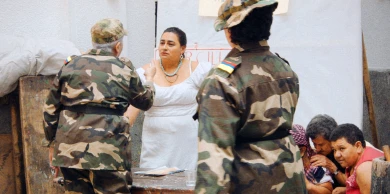
Manuel Correa. The Shape of Now
13 DIC 2025
The Shape of Now is a documentary that explores the challenges and paradoxes of memory, reparation and post-conflict justice, extending a defiant and questioning gaze towards the six-decade armed conflict in which the Colombian State, guerrillas and paramilitary groups clashed to leave millions of victims in the country. The screening is conducted by the Aesthetics of Peace and Desertion Tactics study group and includes a presentation by and discussion with the film’s director, Manuel Correa.
The film surveys the consequences of the peace agreements signed in 2016 between the Colombian State and the FARC guerrilla organisation through the optics of different victims. It was recorded shortly after this signing, a time in which doubts lingered over the country’s future, with many groups speculating in the narration. Correa harnesses the power of images, visual and bodily memory, fiction and re-staging as tools for understanding the conflict, memory and healing, as well as for the achievement of a just peace that acknowledges and remembers all victims.
The activity is framed inside the research propelled by Aesthetics of Peace and Desertion Tactics, a study group developed by the Museo’s Study Directorship and Study Centre. This annual group seeks to rethink, from a theoretical-critical and historical-artistic perspective, the complex framework of concepts and exercises which operate under the notion of pacifism. A term that calls on not only myriad practices ranging from anti-militarism and anti-war movements to activism for non-violence, but also opens topical debates around violence, justice, reparation and desertion.
Framed in this context, the screening seeks to reflect on propositions of transitional and anti-punitive justice, and on an overlapping with artistic and audiovisual practices, particularly in conflicts that have engendered serious human rights violations. In such conflicts, the role played by audiovisual productions encompasses numerous challenges and ethical, aesthetic and political debates, among them those related to the limits of representation, the issue of revictimisation and the risks involved in the artistic commitment to justice. These themes will be addressed in a discussion held after the session.
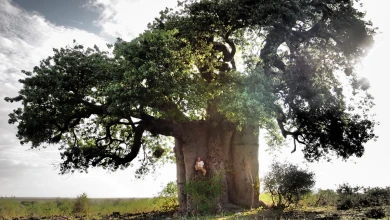
Francisco López and Barbara Ellison
Thursday, 11 December - 8pm
The third session in the series brings together two international reference points in sound art in one evening — two independent performances which converse through their proximity here. Barbara Ellison opens proceedings with a piece centred on the perceptively ambiguous and the ghostly, where voices, sounds and materials become spectral manifestations.
This is followed by Francisco López, an internationally renowned Spanish sound artist, who presents one of his radical immersions in deep listening, with his work an invitation to submerge oneself in sound matter as a transformative experience.
This double session sets forth an encounter between two artists who, from different perspectives, share the same search: to open ears to territories where sound becomes a poetic force and space of resistance.
![Pablo Picasso, Nude with Joined Hands [Desnudo con manos juntas], 1906. The Museum of Modern Art, New York. The William S. Paley Collection, 1990 © Sucesión Pablo Picasso, VEGAP, Madrid, 2023 © 2023, The Museum of Modern Art/Scala, Florence](https://recursos.museoreinasofia.es/styles/small_landscape/public/Exposiciones/picasso_1906_nude.jpg.webp)
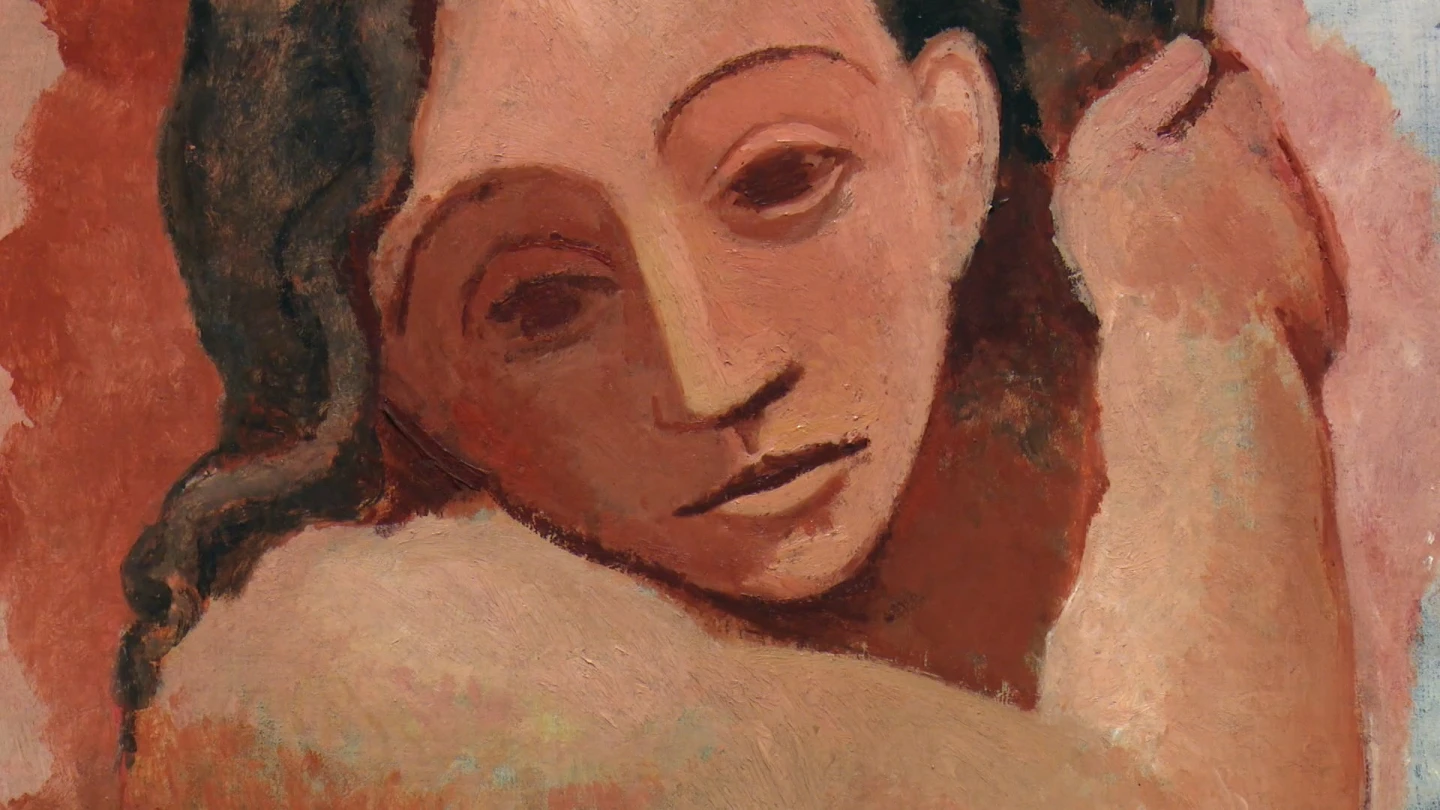
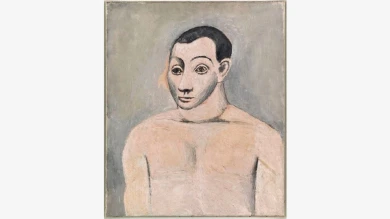




![Miguel Brieva, ilustración de la novela infantil Manuela y los Cakirukos (Reservoir Books, 2022) [izquierda] y Cibeles no conduzcas, 2023 [derecha]. Cortesía del artista](https://recursos.museoreinasofia.es/styles/small_landscape/public/Actividades/ecologias_del_deseo_utopico.jpg.webp)
![Ángel Alonso, Charbon [Carbón], 1964. Museo Reina Sofía](https://recursos.museoreinasofia.es/styles/small_landscape/public/Actividades/perspectivas_ecoambientales.jpg.webp)